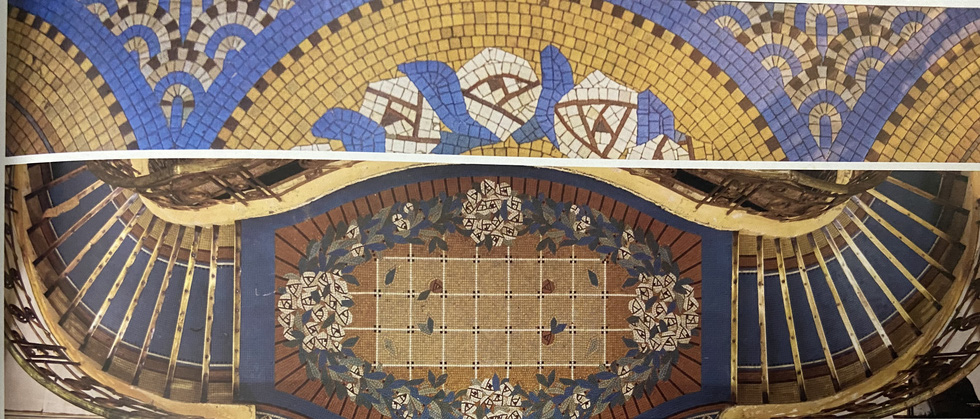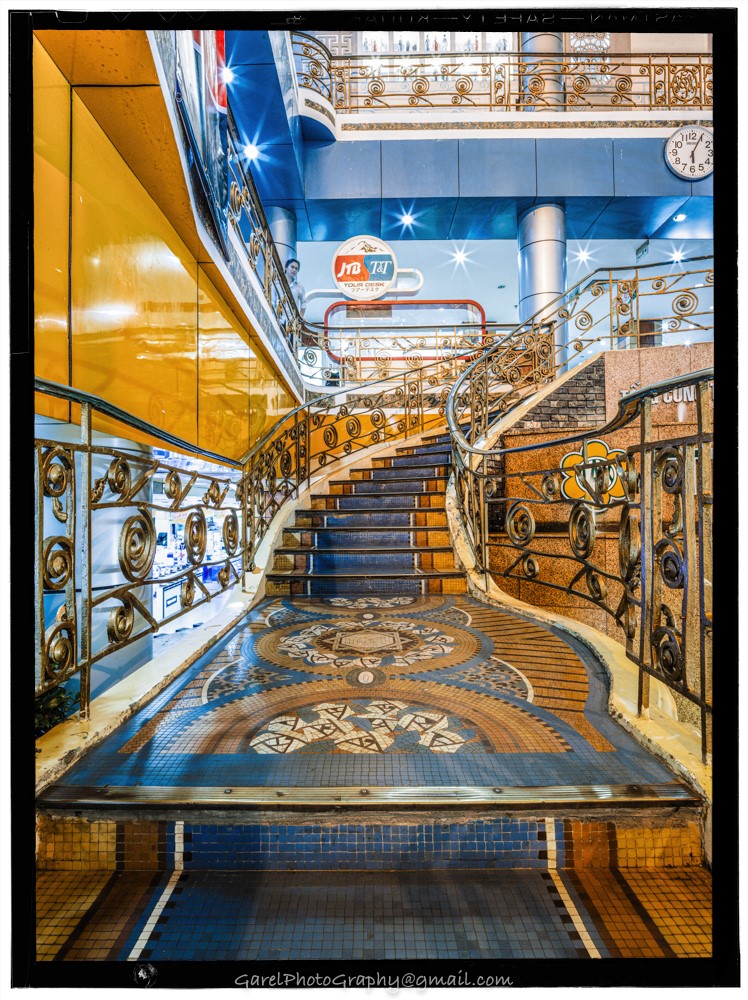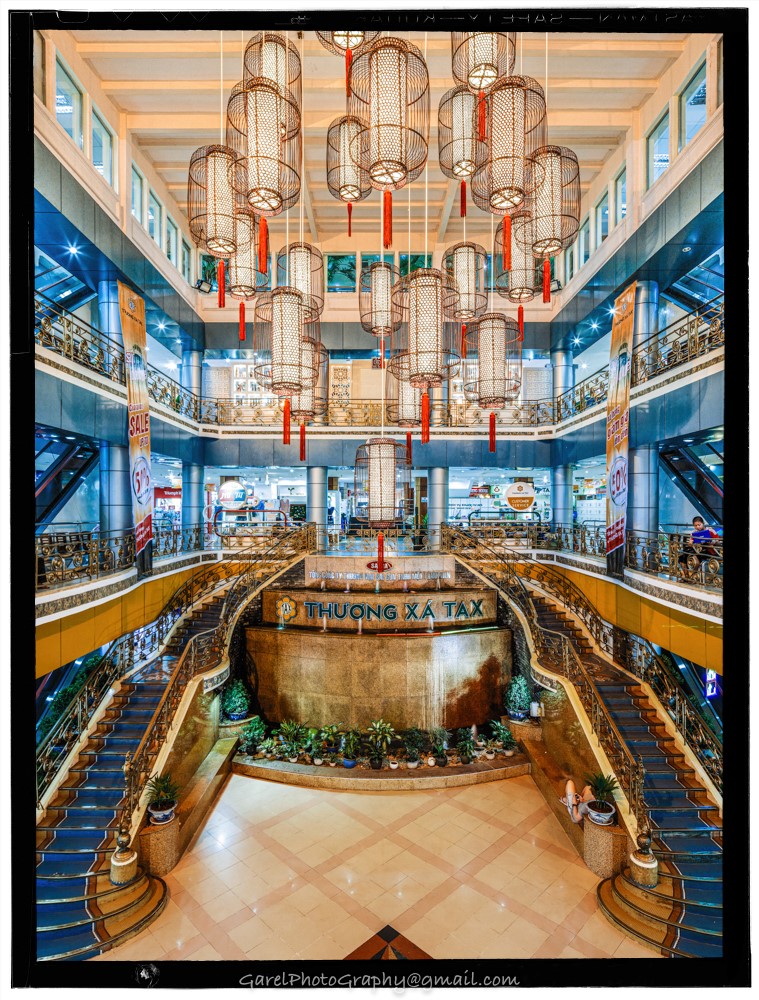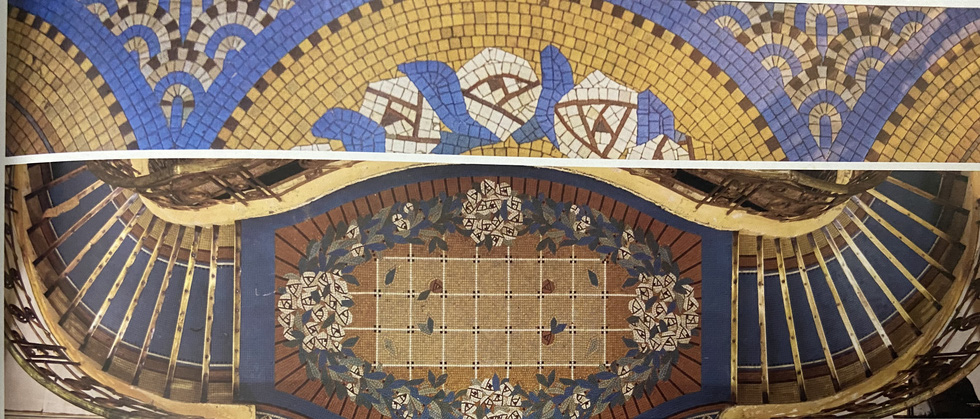Saigon residents are raising questions on the whereabouts of the mosaic from Tax Trade Center

Conservationists and residents concerned with heritages of Saigon, the former name of Ho Chi Minh City, are eagerly awaiting a new home for the iconic mosaic flooring rescued from the Tax Trade Center, a French colonial-era shopping complex demolished five years ago to make way for a skyscraper project.
In 2014, shortly after the high-rise project planned to replace the Tax Trade Center was announced, an assembly of Ho Chi Minh City architects, cultural experts, and local residents gathered 2,500 signatures in support of preserving the 130-year-old building, Lao Dong (Labor) newspaper reported.
The group’s lobbying efforts were met with moderate success, as Satra, the developer of the project, announced in 2015 that several sections of the old building would be preserved, including the signage; the canopy along the adjacent sidewalk; the wraparound staircases, banisters, and copper newel caps in the building’s main entrance; and intricate mosaic flooring in the lobby.
 |
| Mosaic tiles on the grand staircase of the Tax Trade Center in Ho Chi Minh City, Vietnam. Photo: Alexandre Garel |
Seven years on from the announcement that the Tax Trade Center would be razed, ground still has not been broken on the new 40-story high-rise project, raising questions on the whereabouts of the heritage pieces.
Shedding lights on the issue, Nguyen Thi Ha, archeology lecturer at the Ho Chi Minh City University of Social Sciences and Humanities, offered updates on the mosaic flooring and other relics from the Tax Center during an online conference on October 9.
Ha, who took a significant role in the conservation of the mosaic, said the pieces required a significant amount of maintenance following initial removal in 2016 and are still being preserved and largely intact, though some of the enamel tiles which went missing during prior renovations of the Tax Center still have not been found.
The conservation group has sourced new tiles from a France-based factory to replace the missing tiles, Ha shared.
 |
| Mosaic tiles on the grand staircase of the Tax Trade Center in Ho Chi Minh City, Vietnam. Photo: Alexandre Garel |
According to Ha, mosaic art was first introduced to Vietnam during the French colonial era. However, traces of the art form can also be found in traditional artisan practices of locals, as seen in ornamental assemblages on several high-end ceramics pieces produced in the country.
Mosaic patterns can also be found on buildings across Vietnam, from the Tax Center and the Vietnam History Museum in Ho Chi Minh City, to the Bach Dinh (White Palace) in Ba Ria-Vung Tau Province, the Khai Dinh Royal Tomb in Thua Thien-Hue, and the headquarters of Ha Noi Moi Newspaper in Hanoi — the first building in Vietnam to be decorated with multicolored mosaic tiles.
 |
| The grand staircase of the Tax Trade Center in Ho Chi Minh City, Vietnam. Photo: Alexandre Garel |
Other important structures in Hanoi, including the grand Mirror Room in the Hanoi Opera House, the Government Guest House, formerly known as the Tonkin Palace, as well as the State Bank of Vietnam headquarter building in Hai Phong City, are also adorned with vibrant mosaic patterns, Ha said.







